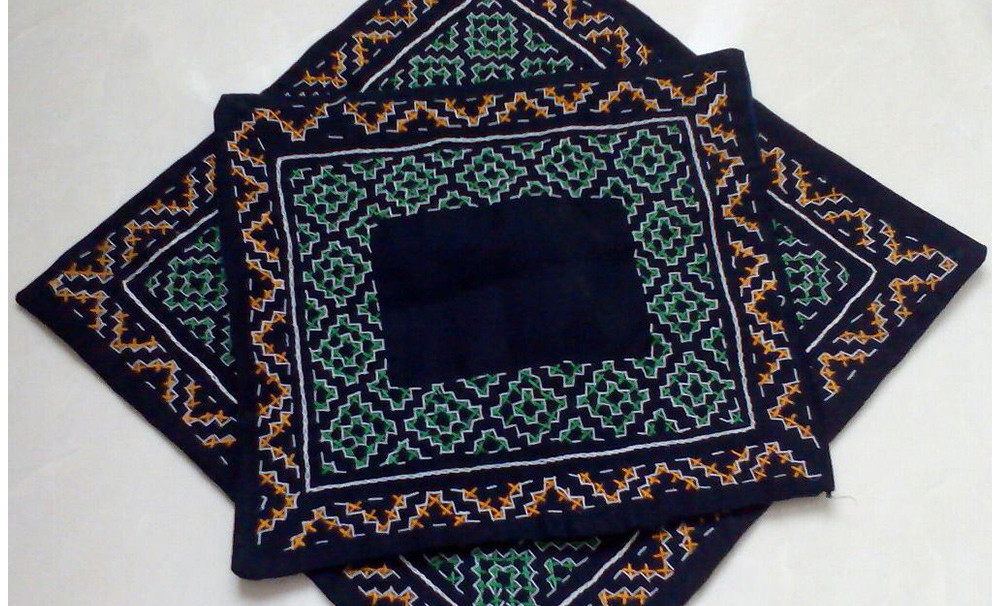
Darvish Douzi or Tafreshi Douzi of Markazi
Darvish Douzi (making of Darvish) or Tafreshi is one kind of embroidery in Iran. The name Tafreshi was used because it was more common in the city Tafresh. This fine and beautiful art reached its peak in the beginning of Pahlavi Dynasty in Tafresh where Zahir ol-Dolleh, Nassr al Din Qajar’s son in law lived. Zahir ol-Dolleh, who was a dervish himself, established an institution for teaching handicrafts to both men and women with the purpose of supporting the needy. Since the craft of making Darvish was common between dervishes, it became more popular by the activities of the institute. Making Darvish can be achieved by a simple technic, and is done by knitting wide margins on the fabrics. It is very similar to “Cheshmeh” of Isfahan, but in comparison, less amount of thread is used to make Tafreshi.
To make Darvish, they first pull 3 threads in the width and height of fabric and create a square with each side about 1cm. Then the center of these squares are sewed by silk yarns with the same color of the fabric. Darvish is most commonly sewed on simple fabric where the wraps and wefts are easily counted. The sewing technic is very simple, too. Usually Shalal stitch (a kind of stitch) is used which makes the Darvish double-sided. In the past, Darvish Douzi was used to ornate “Chador Shab” (a colorful fabric usually with checker pattern that was most commonly used as a blanket), curtains, cover of Korsi (a low table with heater underneath it) and bundles, but today to decorate clothing and tablecloths. To make Darvish, a premade design is not necessary because all the patterns are created from memory and imagination, by counting the wraps and wefts and Shalal stitches. Now it is possible to apply Darvish on any kind of fabric by using Graph papers. Some of the patterns of Darvish are “Nim Gol” (half flower), “Gol Khorshidi Haft Par” (seven-leaf sunflower), “Gol Khorshidi Davazdah Par”(twelve-leaf sunflower), “Gol Khorshidi Dobl”(double sunflower), “Gol Khorshidi Kasir ol-Azla”(multi-leaf sunflower), “Kaleh Asbi (Horse Head)”, “Gol Chahar Par” and etc.